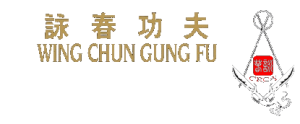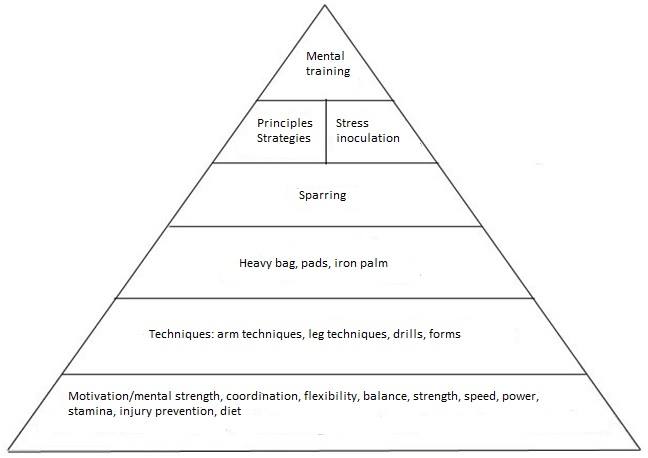Sparring
Sparring is not a fight. It is the link between drills and actual combat . You can’t go from drills, collaborative and predictable, to free application with an opponent completely uncooperative. You will find yourself in a field that you do not know, here comes the strikes (and heavy) and for the fear to take too many strikes, you try to do your best, but all you can do is some uncoordinated movements. The free fight you have to get step by step. You have to gradually work out with less cooperative drills, in which you don’t train not train the technique itself anymore, but its application in terms of distance, timing and stress applied to the opponent. Sparring so becomes no a test, a fight, but a real study in which you get more and more familiar with a real opponent. Being one study, stress is controlled and adjusted, from time to time, on the single session
The study of sparring sessions are meant to learn to handle the opponent and combat stress. In this way, the practitioner learns to get rid of the drill and to implement them in a free context. There are different types of sparring, and for each of them there are the right protections to wear.
Protections are very important when you really hit someone in training! To not become “slave” of protections, simply vary them, and sometimes spar in bare hands without touching hard your opponent. Sparring can be conditioned (situational sparring) or free (all-out sparring). In the conditional arising of the initial rules to which the two athletes have to follow. It can be trained, in a laboratory condition, strategies, distances and techniques. In free sparring you can use the entire technical and strategic fighting strategy of Wing Chun. Conditional sparring is divided into: live drill, distances, strategies. The common factors to all groups are: – The speed and heaviness of the strikes is predetermined and protections are calibrated on them; – The opponent is never cooperative, so that even in conditioned sparring he has to do whatever he can to evade your technique. Protections depend on the type of sparring that you want to train. Always: shin guard, shell and mouthguard. The hand protections may be: 1) Mma gloves; 2) Gloves with open fingers but with extra protection of the knuckles; 3) Gloves from 10 to 16 ounces. If the particularly intense sparring, add an helmet. Let us now see in detail the groups of conditioned sparring. Live drill Studying Wing Chun you will learn a lot of drills. Each drill, from the simplest to the most complex, can be applied in a “live” environment with an opponent who does not cooperate. Pre-drill stage At this first stage the practitioner become more familiar with the attacks and simple defenses. For simple defenses now I mean coverings and dodges. For me is important to start with covering and dodges, because they come from instinctive movements, and when you find yourself unable to use “superior techniques” against your opponent, and stress become to get high, instinct will grow and you will find yourself to put your head inside your arms (covering) or going away from the strikes (dodging). So it is better to learn how to cover and dodge properly.
Someone tells me that Wing Chun doesn’t have covers and specially dodges (Wing Chun trains to get contact with the opponent).
I think that this is not always true. Yes, of course touching your opponent can increase your chances, but Wing Chun says also to “not collide with a strong arm bridge and to avoid it”. So, sometimes contact is not useful. More, every step in Wing Chun finish with the word “Ma” (Toh Ma, Syeung Ma, Seep Ma…), but two of them are called Loy Seen Wai and Ngoy Seen Wai and not Loy Seen Way “Ma” and Ngoy Seen Way “Ma”.
That is because Loy Seen Way and Ngoy Seen Way, to me, are more a relation to the opponent than simple steps. This means that I can assume that relation even without as real step but with a chest movement (dodge).
In effect we see a real dodge in the Chum Sun movement of the Biu Jee form.
So, in Wing Chun we can dodge when it is useful and/or another better technique can’t be applied,
At this level, sparring is single attack (arm or leg) and simple defense in covering or dodge. This will be the foundation on which everything else will be grafted. An example of Drill: Straight punch drill Purpose: Intercept opponent straight punches with Yang techniques (pock, jom, gum, etc.). Base training of trapping. Fotwork applied: in the basic drill only Choh Ma What happens to the center line: Does not change. The advantage of the center line is acquired through the Yang technique Partner A actions: Performs continuous direct punches, with rotation. Partner B actions: Performs Yang techniques with rotatiion to intercept (and deflect) the opponent’s punches. Live drill (A) The two practitioners are in free guard and in a fighting distance. The footwork is free. Fists are thrown to target. Partner A actions: Closes the distance and performs one or more straight punches. Partner B actions: Tries to apply the drill as many as many time as possible. If he fails to apply the drill, he can “go down” in the basic defense (dodges and covers). Live drill (B) The two practitioners are free guard and at fighting distance. The footwork is free. are thrown to target. Partner A actions: He closes the distance and throws one or more punches of any kind. Advanced practitioners you can add leg techniques Partner B actions: He can attack too, but in defense he tries to apply the drill as many time as possible. If he fails to apply the drill, or to defend techniques other than straight punches, he can use the basic defenses (dodges and covers). This training structure can be applied to any drill. distance training Here we begin to go beyond from the “drill” concept “,and train a predetermined scenario. To do that practitioners can use all the drills in their knowledge. Exercise of the distances I mean dedicated sessions and fixed at a specific distance. By distance training I mean sessions at a specific distance: kicks, punches and chee sau, grappling, ground. That will teach a practitioner what happens at a particular distance. What are the strengths and what the weaknesses of that distance. Advanced practitioners will perform sessions of transitions from one distance to another (example from kick distance to chee sau, from punches to ground, from kicks to ground, etc…) Strategies training (A) Here we put together the previous works. We give a role to practitioners and we give them a particular strategy while the other guy tries to avoid it. Some examples: – Training of distances: here I mean trying to acquire a certain distance against someone who does not cooperate (eg. Close to someone who wants to keep long) – Try to apply trapping; – Try to press the opponent and get to use chee sau; – Etc.
Strategies training (B) – advanced strategies
Many people say that in Wing Chun we train instinct and that we don’t have proper fighting strategies as fighting sport have.
That is true, of course. Wing Chun theories, drills and main strategies are made to train our instinct so we can use proper techniques when we are assaulted from someone or when we are under stress.
But, if we want to be complete, in the kinds of fighting we have to include the “duel”.
By duel I mean, for example, the situation where the bad guy says us:”Hey, come outside and lets fight”.
It is not a sudden assault. It is a situation where you know you are going to fight.
And I don’t mean a sport fight. I mean a real street fight, with the only difference that you know you are going to fight.
Now you have two choices: you can still use instinct, or you can use a strategy suited for your opponent.
After all it is not true that Wing Chun does not use fighting strategies. For example the proverbs:
– Do not collide with a strong arm bridge, but avoid it and be the first to attack
– Do not collide with a strong opponent, but if the opponent is weak, use direct front assault
– Fast charging and thrusting attacks are well suited for “closing the gap.”
are examples that can be referred to strategies to apply after studying the opponent.
And we know that at high levels ” the application of techniques will vary according to the opponent”, that can be intended that sometime we can study our opponent, think a specific strategy for and use it against him.
Lot of times students have told me:”I don’t know what to do when I’m in front of my opponent”.
It is like playing chess: you can play just knowing the movements of the pieces and simply reacting to the opponent moves, or you can use some strategies as the better player do.
I divide this training strategies in two categories:
1- I take initiative;
2- Opponent takes initiative.
I take initiative.
I see the posture of my opponent, his movements and how he reacts to my attacks. Depending on these factor I build the right strategy.
I look for as bad guard position, if he exposes some targets, and if he does some mistakes in footwork.
If he doesn’t have this problem I see how he reacts to my movements.
He takes initiative
I see how he attacks and he exposes some targets in doing this.
For example if he throws only single attacks, if he has fixed patterns, if he attacks “assaulting” me and so on.
All these elements give me keys to build the right strategy for him and “aaccording me to him”,
(Text by Vito Armenise)





